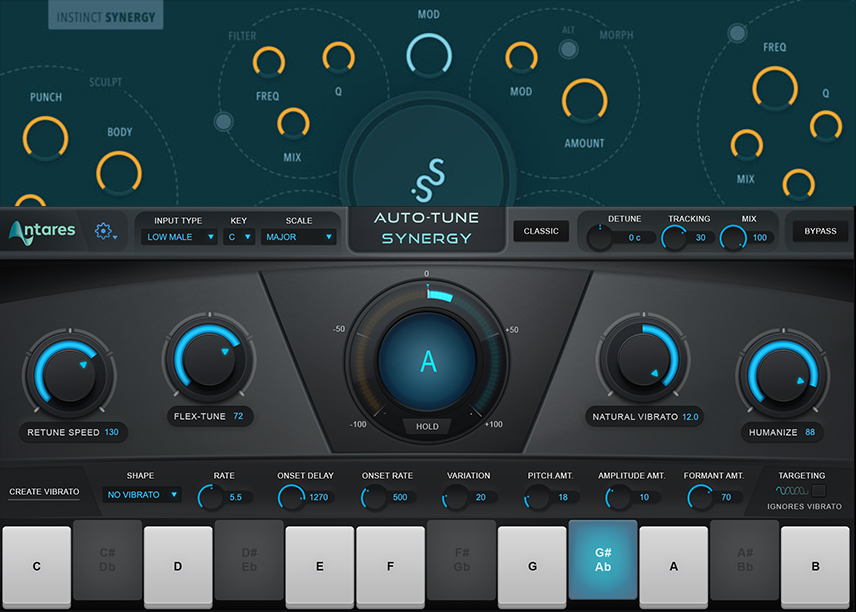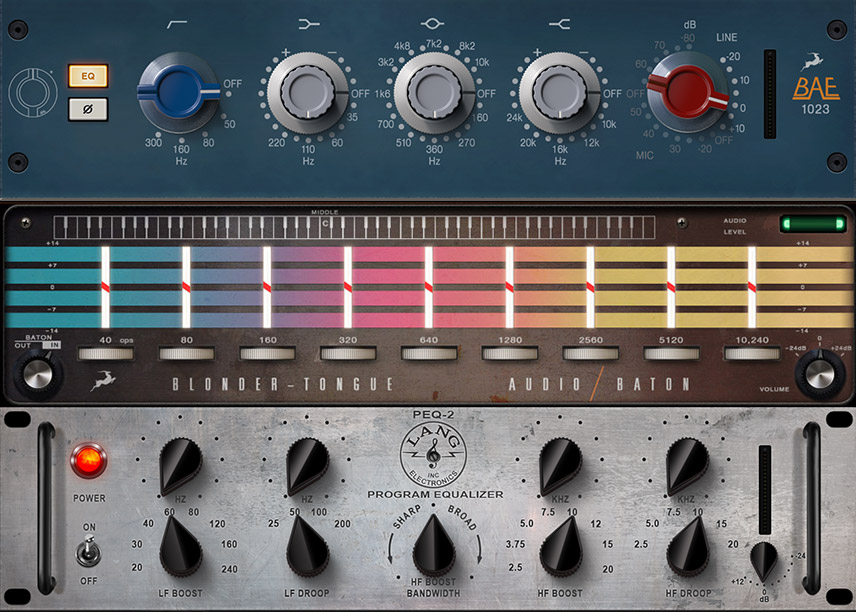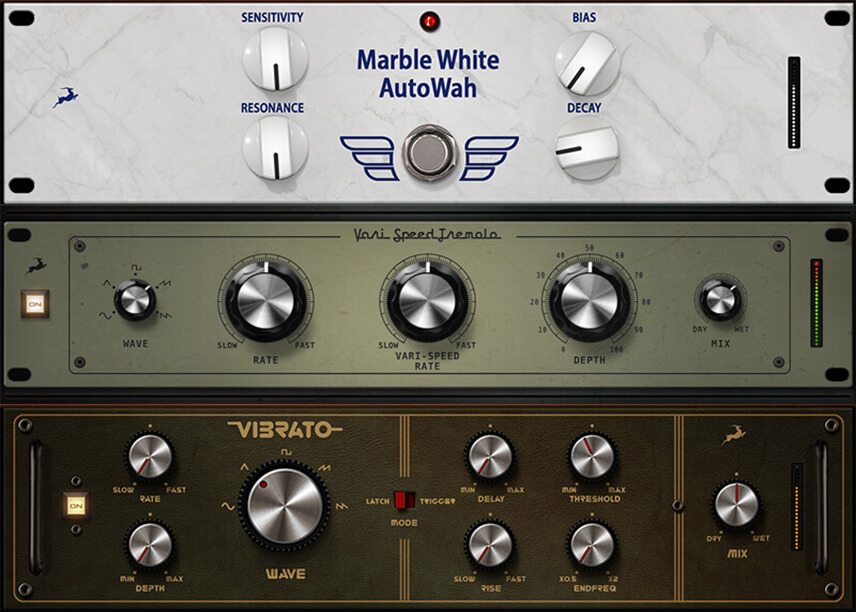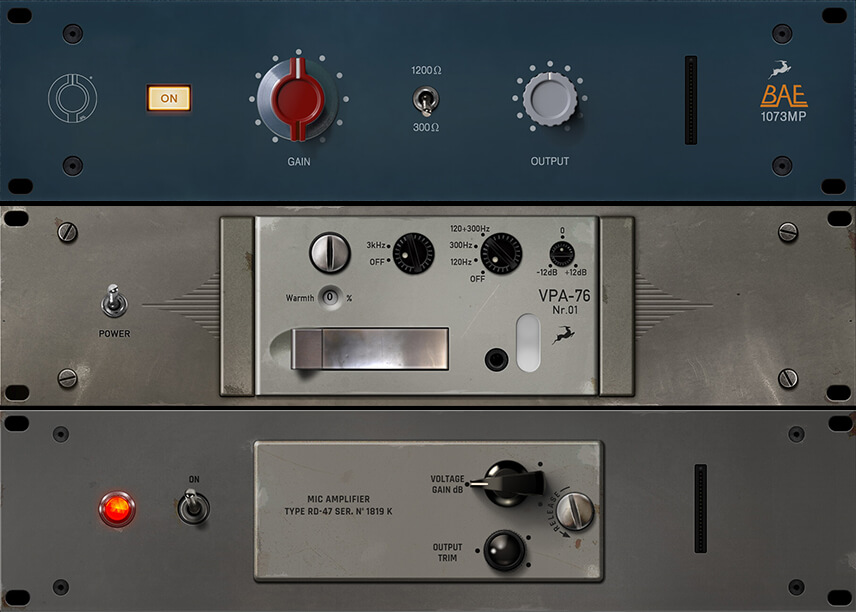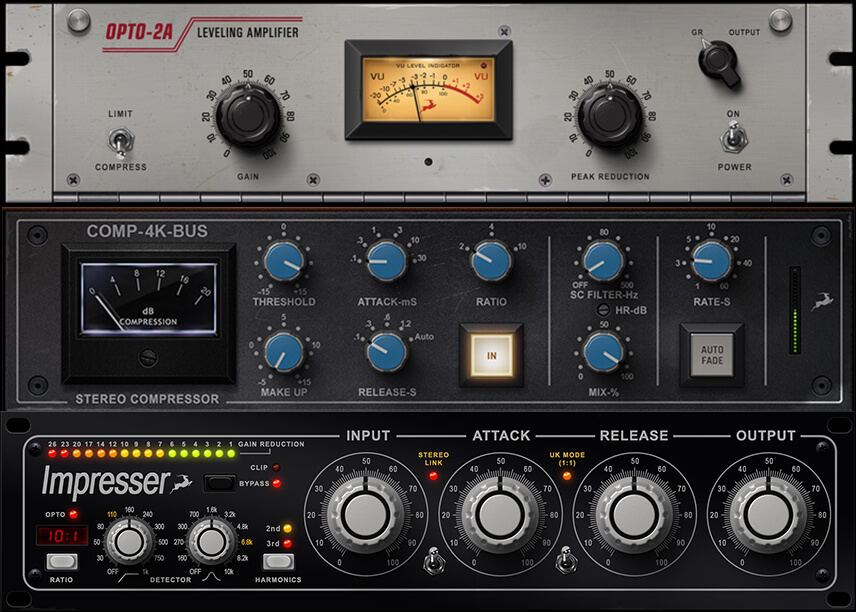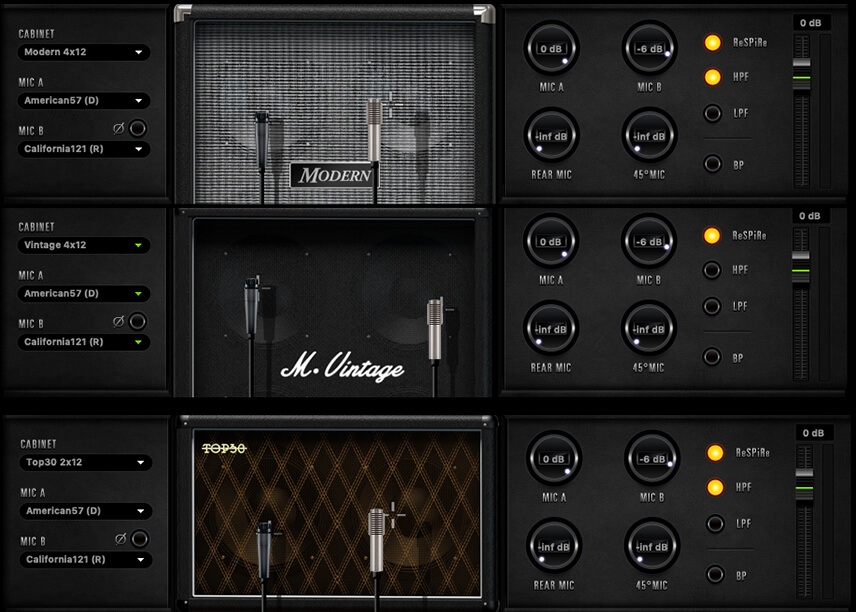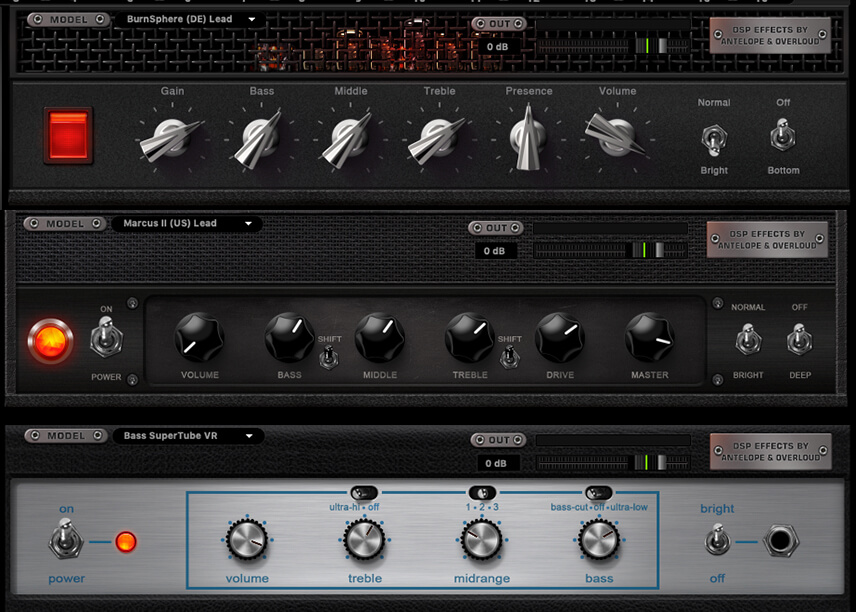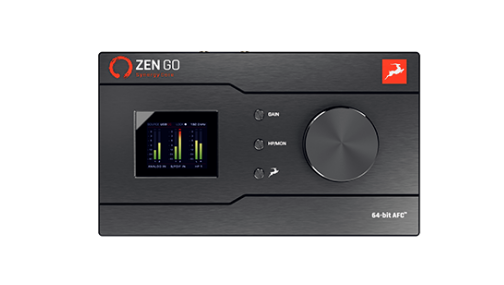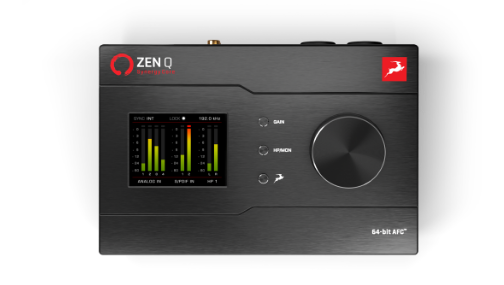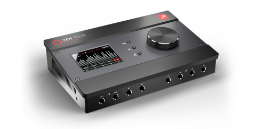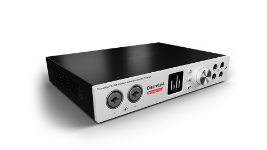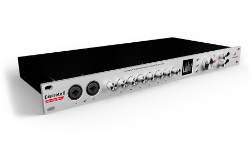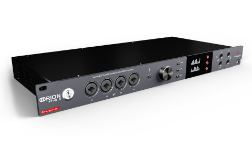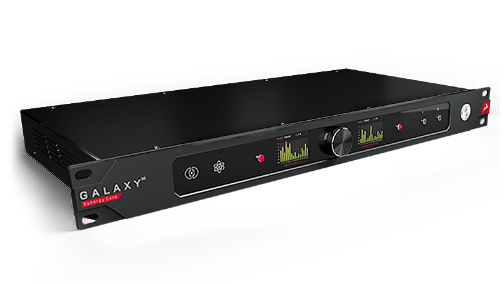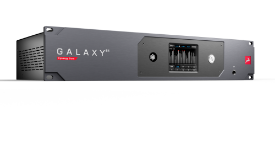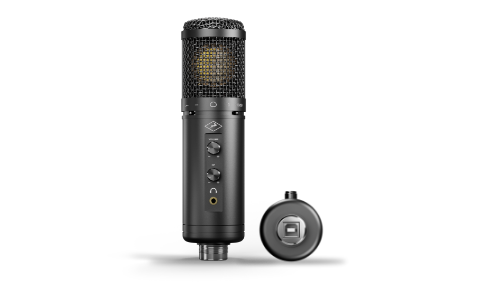Become the owner of your virtual recording studio with Synergy Core – an onboard processing platform, that brings the future of effects modeling directly to your workstation. The unique fusion of DSP and custom FPGA allows you to capture the true magic of vintage analog units and bring it in real-time to your tracking and mixing sessions.
Synergy Core
Home to the Finest Real-Time
Analog-Modeled Effects
smart EFFECTS PROCESSING
Push your creativity,
not your computer

Explore the Synergy Core advantages
Effects collection
Analog-modeled
and 3rd party effects
in one library
The Synergy Core is home to one of the fastest-growing onboard effects libraries in pro audio. It is a blend of software emulations of vintage classics and a growing collection of effects co-developed with 3rd party companies such as Antares and Inertia Sound Systems. Most of the modeled analog gear is considered industry-standard “golden units” while other effects emulate rare and expensive pieces of hardware that are difficult to find, thus making them exclusive for the Synergy Core platform.
All Synergy Core interfaces come with effects included while others can be unlocked from a constantly upgraded expandable library.
Modeling process
Unique approach
to hardware
modeling
Modeling analog hardware for the digital domain is nothing new in the world of audio. What separates our effects from other similar software on the market is the process of measurement and utilization of FPGA processors for modeling. For every analog-modeled effect in our interfaces, we have disassembled each part of the hardware original and measured the character of every single individual capacitor, transistor, transformer and valve. Only then, the effect is emulated on the programmable FPGA – carrying every single unique non-linearity of the analog unit. This allows us to create effects sounding as close as possible to the original hardware. The purity and complexity of this true circuit modeling is the embodiment for what Antelope Audio stands for.
Read more →
When a signal passes through an analog piece of equipment it is being affected by every single component inside – from the transformers to the valves, capacitors, resistors, and even wires. The magic and character of analog gear hide in its imperfections and in all the non-linearities added by the components. The sound is often altered by unique harmonic distortion, depth, and dimension which unfortunately cannot be replicated accurately with traditional emulation techniques used by software developers.
Companies often measure the incoming and outgoing signals from analog gear and try to compensate for the differences with mathematical algorithms. In some cases that may get the effects to respond and sound close to the original hardware, but it’s no more than a mere imitation which is unable to capture the subtleties. Those old methods can’t accurately replicate the subtle non-linearities added to the audio by every single component.
We at Antelope Audio believe those methods are outdated, which is why we developed a unique way of doing things. For every effect emulation we have created, our team of engineers stripped down every single component of its analog domain, measured it, and recreated its values, behavior, and non-linearities in a digital form. Using the original schematics for the hardware we then built a true digital representation of the analog gear. The unique FPGA chips found in our devices allow us to recreate the behavior of every single component in an analog device simultaneously and in real-time. The purity of this emulation method is incomparable to traditional techniques as standalone DSP chips simply don’t have the capacity for the necessary parallel computation.
Tracking and mixing
Real-time workflow and
imperceptible latency in every
stage of production
You can use the effects during live tracking, recording and post-production. When performing live or recording you have the option to distribute different mixes loaded with effects and let the musicians monitor in real-time with near zero latency. Mixing in your DAW with the effects is also possible by integrating them in your chain as hardware inserts or with the help of the AFX2DAW plugin. Synergy Core gives you the true virtual recording and mixing studio experience directly from your interface.
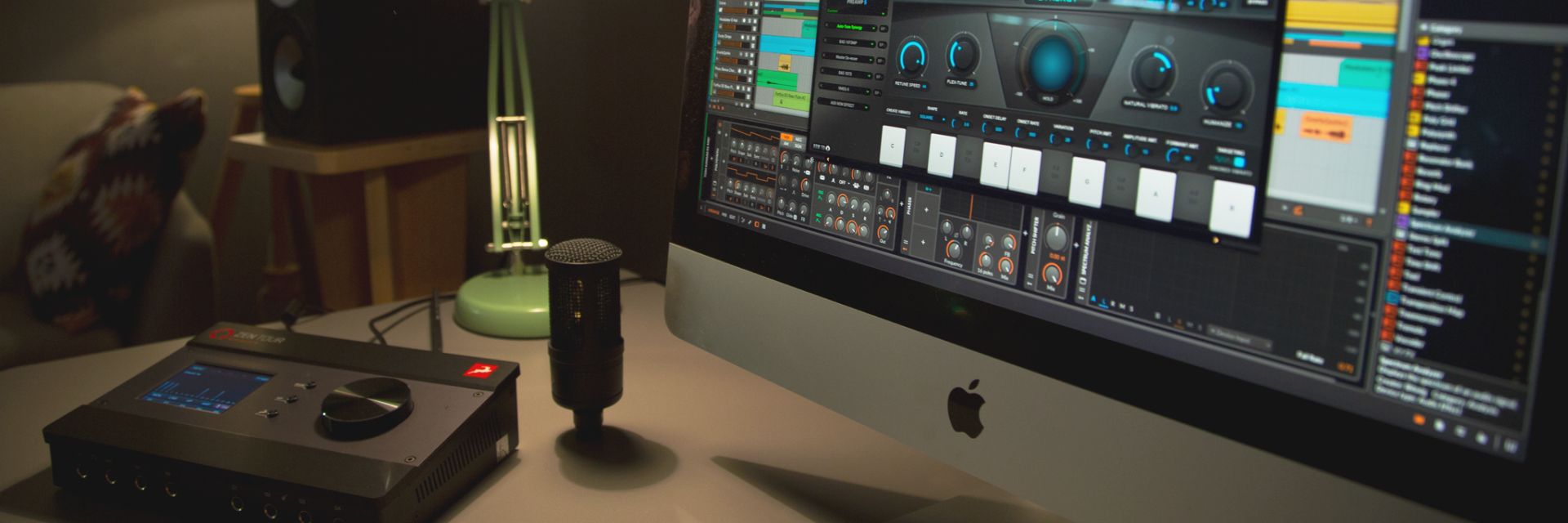
Working in synergy

The unique parallel computing power
of a custom FPGA, harnessed for
crafting analog-modeled effects.
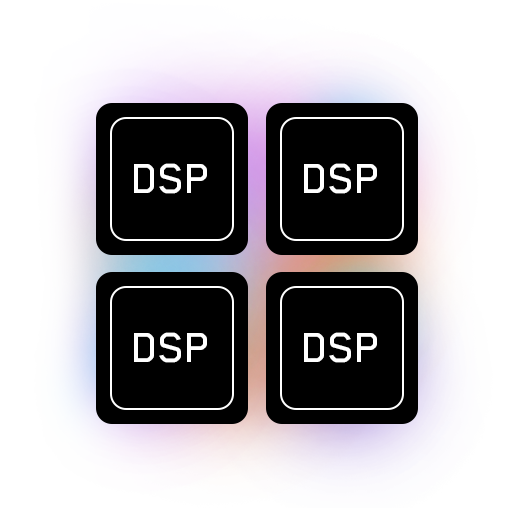
The powerful acceleration of ARM
processors, utilized to expand the
scope of the entire effects collection.
Processing
Effects processing powerhouse
The platform can run all the effects you will ever need in a session simultaneously. Apply them across individual audio channels with high instance counts and without any need for external accelerators or having to worry about DSP usage. Synergy Core remains stable even under the maximum load without fear of overloading, falling over or crashing.
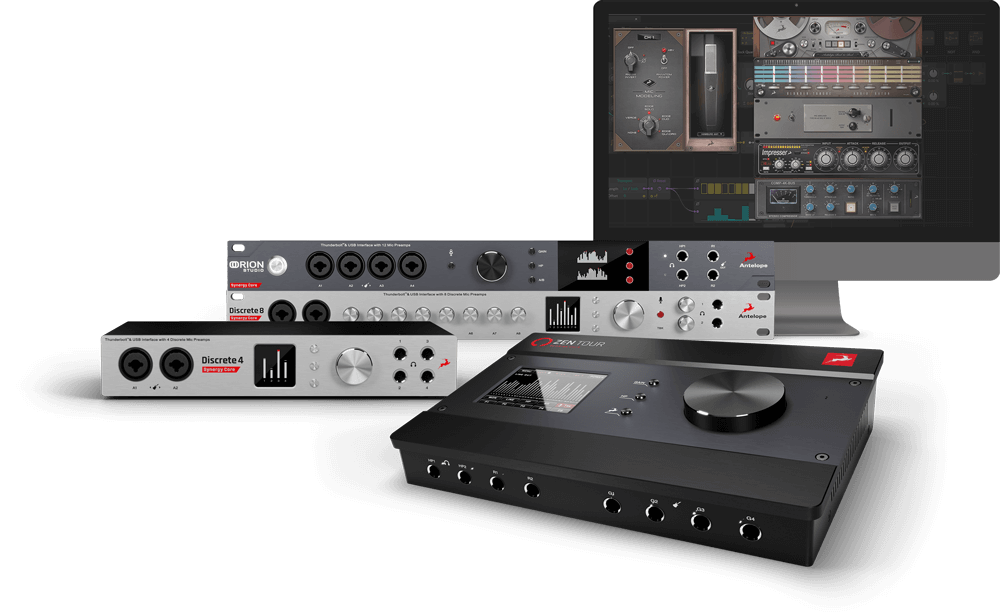
Onboard platform
Zero CPU power needed
Synergy Core offloads all processing to the interface, thus saving your computer’s built-in processing power and memory. This clears the way for more bandwidth needed for internal operations such as loading in-DAW VSTs or other CPU-heavy synthesizers and samplers. You will also have processing power left to adjust the settings of the buffer size of your project.
Out-of-the-box thinking for
your in-the-box production
AUDIO INTERFACE
PROCESSING PLATFORM
EFFECTS INCLUDED
EFFECTS INSTANCES
*This number is largely dependent on every individual session since every effect has its own instance count. What is given is the theoretical maximum that the interface's processing platform configuration is capable of.

“The Synergy Core allows me to have more processing muscle power when I am mixing large sessions, with many different EQ and compression options.”
- Brian Vibberts
6× Grammy Award-winning Audio Engineer
/Michael Jackson, Aerosmith/
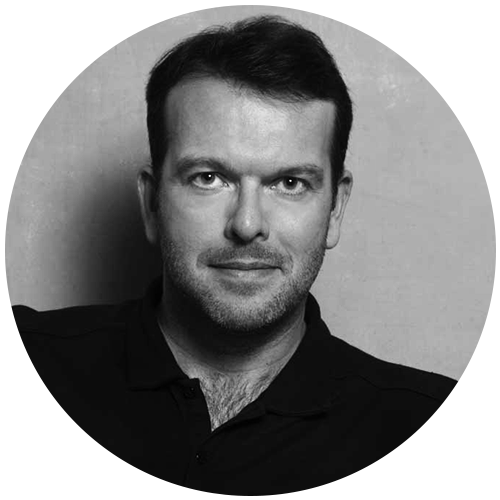
“The Antelope plugins sound warm, big, and analog in the best possible way. The Synergy Core platform is my “in the box outboard gear.”
- Lars Deutch
Film Score Composer

“With Synergy Core’s incredible amount of effects, I can get my whole creative process into full gear, long before I even need to open up my DAW. It’s an entire recording studio.”
- Jay Leonard J
Guitarist, Vlogger, Composer, Performer

“The Synergy core technology has given me the power and the freedom to achieve classic sounds and colors without patching a single cable. And it’s not taxing your CPU either.”
- RedStone Productions
/Music Production Studio - Amsterdam, Netherlands/
×
When a signal passes through an analog piece of equipment it is being affected by every single component inside - from the transformers to the valves, capacitors, resistors and even wires. The magic and character of analog gear hides in its imperfections and in all the non-linearities added by the components. The sound is often altered by unique harmonic distortion, depth and dimension which unfortunately cannot be replicated accurately with traditional emulation techniques used by software developers.
Companies often measure the incoming and outgoing signals from analog gear and try to compensate for the differences with mathematical algorithms. In some cases that may get the effects to respond and sound close to the original hardware, but it's no more than a mere imitation which is unable to capture the subtleties. Those old methods can’t accurately replicate the subtle non-linearities added to the audio by every single component.
We at Antelope Audio believe those methods are outdated, which is why we developed a unique way of doing things. For every effect emulation we have created, our team of engineers stripped down every single component of its analog domain, measured it and recreated its values, behavior and non-linearities in a digital form. Using the original schematics for the hardware we then built a true digital representation of the analog gear. The unique FPGA chips found in our devices allow us to recreate the behavior of every single component in an analog device simultaneously and in real-time. The purity of this emulation method is incomparable to traditional techniques as standalone DSP chips simply don’t have the capacity for the necessary parallel computation.
What does the FPGA take care of?×
At Antelope Audio we develop custom FPGA chips that take care of many tasks. This allows Synergy Core to complete much more complex algorithmic processing and convolution than the one found in standard DSP-only interfaces with built-in chips. Furthermore, FPGA’s programmable circuits allow us to stay flexible with the design - this way, the platform can be constantly upgraded. In Synergy Core the FPGA:
Allows us to create unique audio effects – After emulating the behavior of every single component found in an analog circuit, we can literally recreate that same circuit in a digital form on the programmable chip. This modeling process separates our analog-modeled effects from any other effect on the market.
Eliminates roundtrip latency when tracking with effects - There is no delay added during the process as all effects are calculated in real-time inside the interface just like real hardware. No samples of latency are introduced by each new effect instance, because the process doesn’t go through your computer.
Takes care of effects processing and core audio processing – The custom FPGAs are not limited to effects only. The circuit board is divided into sections for effects processing and audio processing. Its massive internal memory and parallel computation capabilities tend to the large stream of information that is all routing, mixing, audio stream and effects processing.
Enables you to use your Synergy Core interface as a standalone - Our interfaces don’t require constant connection to a PC or Mac. Once the audio configuration and routing are set, the FPGA’s internal memory is enough to get you through the recording session.
What does the DSP take care of? ×
Contributing a significant boost in computing power, cutting-edge ARM DSPs satisfy the needs of power and processing hungry audio applications. The DSP’s high-speed arithmetic and logical hardware is programmed to execute algorithms and ingest real-time signals. In Synergy Core the DSP:
Executes tasks set by the FPGA - With Synergy Core you always have the right type of processing available for the task at hand because the ARM DSPs work together with the custom FPGAs. The DSP completes all calculations and operations required for processing each piece of real-time FPGA information consecutively, before the next one arrives.
Allows us to expand the Synergy Core with new effects – When it comes to 3rd party and modulation (delay, echo, flanging) effects, DSPs are the most efficient way to update our platform. Synergy Core’s modular design allows us to configure and scale the platform to make it fully future proof.


